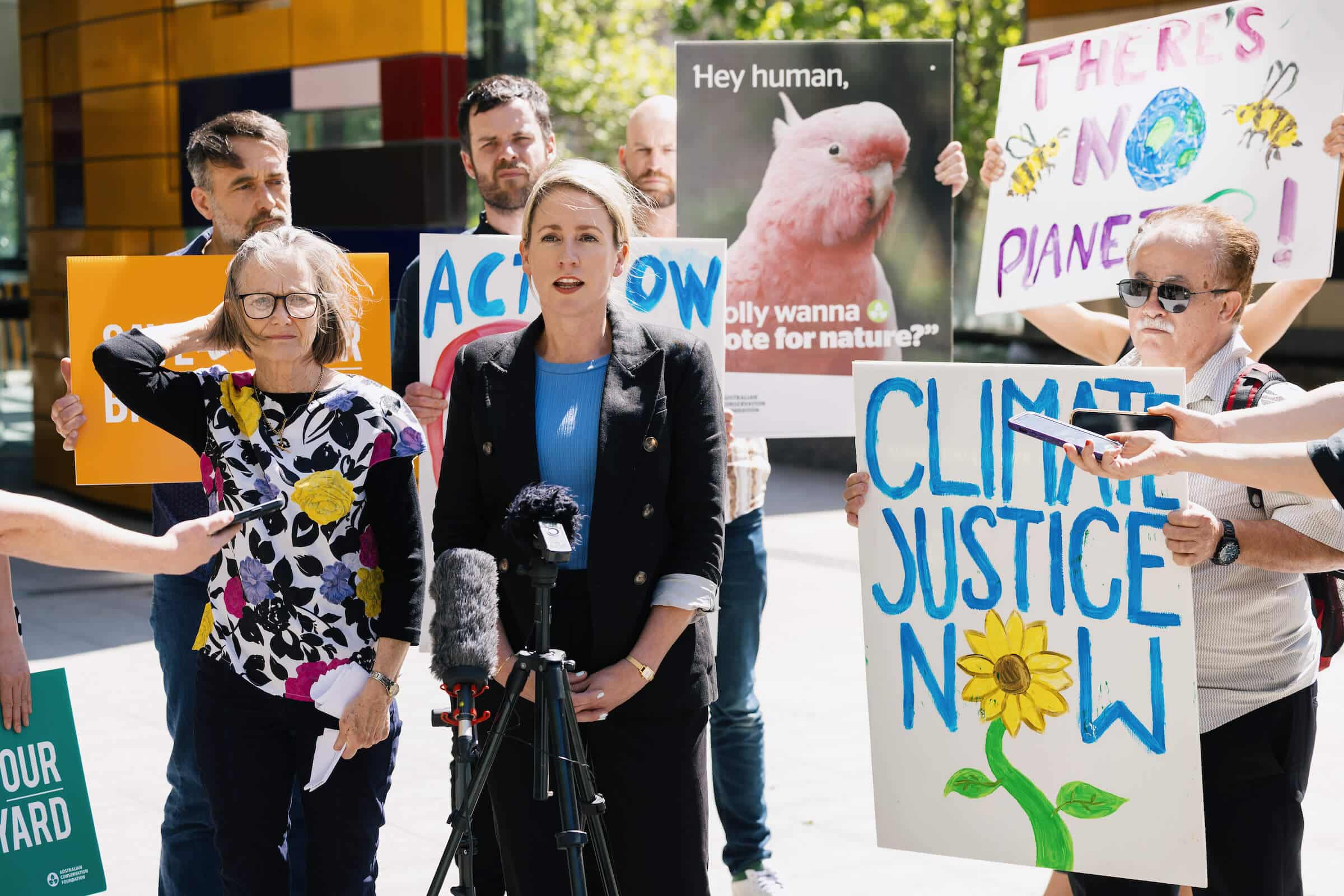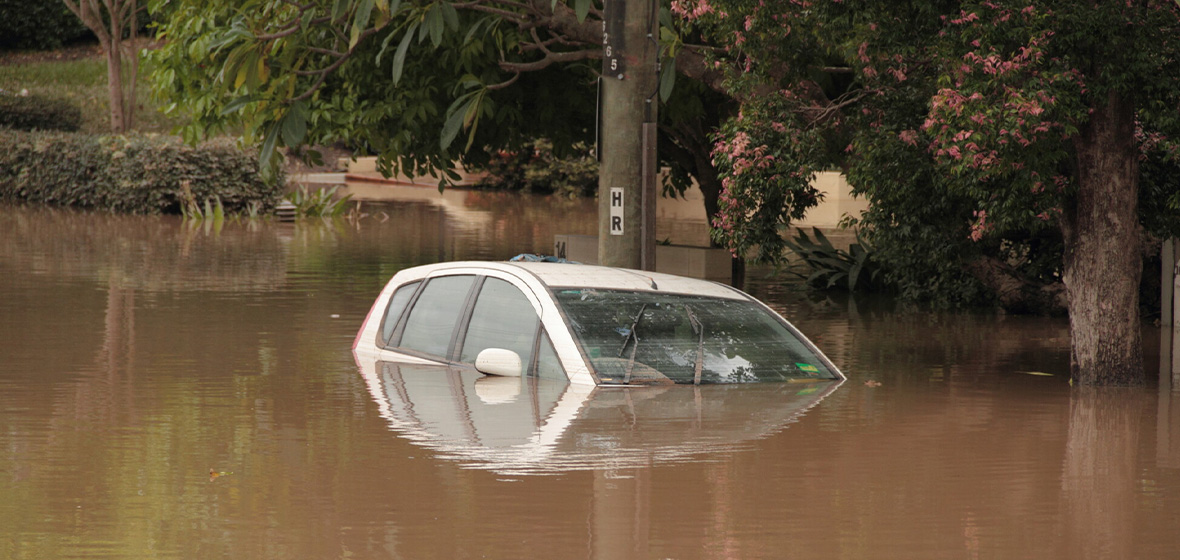As COP28 wraps up on 12 December 2023, pressure mounts for developed nations to reduce their greenhouse emissions. But in Australia fossil fuel projects are still playing a significant role, and the legislation lack inadequate measures to reduce their impact
A year ago, the Commonwealth’s Climate Change Bill 2022 provided for legislated emissions reductions of 43 per cent by 2030 from 2005 levels, and net zero emissions by 2050.
However, analysis released by the Australian Conservation Foundation (ACF) says that 16 new fossil fuel projects have been approved or have received “material support” under the Albanese government – and these projects are slated to release almost 7 billion tonnes of carbon pollution over their lifetime.
The ACF’s General Counsel Adam Beeson says the climate impacts of new projects are not being sufficiently assessed, largely due to the way the Environment Protection and Biodiversity Conservation Act 1999 (EPBC Act) is currently written.
The EPBC Act is the key piece of legislation through which new projects (actions) may require environmental approval at a Commonwealth level.
“In order for Australia to play its part, we need to be assessing the consequences of our activities. Particularly those activities that have material impacts on global temperatures,” Beeson says. “We don’t do that at the moment in a systematic way because of the deficiencies in the Act.”

The EPBC Act outlines nine categories as matters of national environmental significance (MNESs). If a project has the potential to impact any of these protected matters, it must be approved by the Environment Minister under the Act. The categories are:
- World Heritage areas
- Commonwealth Heritage areas
- Ramsar listed wetlands
- threatened species and ecological communities
- listed migratory species
- Commonwealth marine areas
- the Great Barrier Reef Marine Park
- nuclear actions
- water resources.
No way to measure
The Act does not explicitly include a mechanism for assessing the climate impact on these identified areas of environmental significance.
“The EPBC Act came into force in 2000. It was a piece of legislation prepared under the Howard government and it does not specifically mention climate change,” Beeson says.
“There’s no specific regime within the current EPBC Act to deal with climate impacts or to deal with projects that will have significant consequences for the climate. Such as via emitting large amounts of greenhouse gas emissions.”
One proposed solution to this deficiency is in the form of a “climate trigger”.
Introduced by Australian Greens senator Sarah Hanson-Young, an amendment to include a climate trigger in the EPBC Act is currently before the senate in the form of the Environment Protection and Biodiversity Conservation Amendment (Climate Trigger) Bill 2022.
The proposed bill would amend the EPBC Act to require actions slated to emit between 25,000 and 100,000 tonnes of carbon dioxide equivalent in Scope 1 emissions, in any one year, to be assessed for approval under Part 9 of the Act. Scope 1 emissions are emissions produced as a direct result of a proposed action, including fugitive emissions, burning of diesel and petrol, and the on-site production of energy through the burning of coal.)
The amendment would also require the rejection of all actions which would emit more than 100,000 tonnes of carbon dioxide equivalent in Scope 1 emissions annually.
“By creating a climate trigger this way, you would simplify and clarify the way the EPBC Act deals with climate,” Beeson says.
‘By creating a climate trigger … you would simplify and clarify the way the EPBC Act deals with climate.’
Some environmental and legal organisations, including the ACF, argue that despite the lack of explicit mention of climate, there is still scope within the EPBC Act to assess the impact of climate change.
This can be done, Beeson says, by assessing the link between increased greenhouse emissions from a project, climate change, and the subsequent impact on protected matters.
“The key question for new activities under the EPBC Act is whether they will have a significant impact on a matter of national environmental significance,” he says.
“With activities such as the opening of a new gas field or a new coal mine, or the development of a coal fired power station, the science tells us that the emissions will ultimately impact matters of national environmental significance.
“They would affect the Great Barrier Reef and the viability of certain species that have limited habitat, such as the mountain pygmy possum.”
Beeson says the big deficiency in the EPBC Act at the moment in respect to climate is that it “doesn’t specifically mention climate impact or provide a specific mechanism to deal with it”.
“So you end up in litigation disputes about the precise application.”
In July 2022, the Environmental Council of Central Queensland (ECoCeQ), represented by Environmental Justice Australia (EJA), submitted reconsideration requests for 19 coal and gas projects to the Federal Environment Minister.
The requests, known as the Living Wonders legal intervention, were lodged under 78A of the EPBC Act and argued that the approval of these projects should be reconsidered based on a bank of new evidence demonstrating the link between greenhouse gas emissions and impact on protected matters.

Despite accepting a connection between the burning of fossil fuels, climate change and environmental impacts, in May 2023 Environment Minister Tanya Plibersek held that for three of the 19 projects there would be little, if any, significant increase to global greenhouse gas emissions and, therefore, to climate change.
These three projects are MACH Energy’s Mount Pleasant Coal Mine in the Hunter, Idemitsu’s Ensham Coal Mine in the Bowen Basin, and Whitehaven’s Narrabri coal mine.
The ECoCeQ sought judicial review of the Minister’s decision in respect to Mount Pleasant and Narrabri. In October, Justice Shaun McElwaine dismissed the review, finding the Environment Minister had acted lawfully.
“It was legally open to the Minister to weigh and assess the applicant’s material and submissions cognisant of the potentially catastrophic effects of climate change on MNES,” Justice McElwaine found.
“The Minister in discharging what is clearly a heavy responsibility was not obliged to reason in the manner contended by the applicant.
“Ultimately, the applicant’s arguments, anchored by the extensive scientific material relied on, raise matters for Parliament to consider whether the Minister’s powers must be exercised to explicitly consider the anthropogenic effects of climate change in the manner the applicant submits they must.”
Hard to believe
EJA senior specialist lawyer Retta Berryman says it is “hard to believe” that the EPBC Act doesn’t specifically deal with climate change.
“This ambiguity has allowed hundreds of fossil fuel projects to be approved since the laws were introduced in 1999,” Berryman says.
“Australia’s Environment Minister currently interprets the law in a way that stops her from scrutinising the climate harm of new coal and gas projects on her desk.
“These are urgent and critically important legal questions which the full bench of the Federal Court is now being asked to determine.”
The Living Wonders appeal will go before the full Federal Court in February 2024.
“It shouldn’t take community members taking their government to court to have the scientific reality reflected in decision making,” Berryman says.
“The Court will be asked to consider whether Minister Plibersek’s application of the existing environmental laws – in a way that fails to recognise the scientific reality of the harm new coal and gas will cause to the environment she’s charged with protecting – is lawful.”
“Even if our client is successful in their appeals, it’s time for Australia to specifically address the shortcomings in the existing laws that have enabled successive Environment Ministers to side-step the climate harm of new coal and gas.”
‘it’s time for Australia to specifically address the shortcomings in the existing laws that have enabled successive Environment Ministers to side-step the climate harm of new coal and gas’
Triggers are nothing new
Discussion around whether to include climate in the EPBC Act have been ongoing since its inception in the late 1990s.
As early as 2005, now Prime Minister Anthony Albanese introduced the Avoiding Dangerous Climate Change (Climate Change Trigger) Bill to Parliament, which would have seen the EPBC Act amended to include climate change as an MNES, ensuring that actions that led to emissions of more than 500,000 tonnes of carbon dioxide equivalent per year would be assessed.
Since then, the Act has undergone two reviews. The first was led by Dr Allan Hawke and released in December 2009. It recommended “an interim greenhouse trigger, with a threshold of at most 500,000 tonnes of carbon dioxide equivalent emissions, be introduced as soon as possible by way of Regulation”.
The Samuel Review was released on October 2020, led by Professor Graeme Samuel AC.
Similarly to the first review, the more recent iteration suggests that specific policy mechanisms adopted by respective federal governments “are the appropriate way to place limits on greenhouse gas emissions,” rather than including a climate trigger in the EPBC Act.
While Beeson agrees that standalone legislation is an option, he argues the EPBC Act “is the best place to deal with the impacts of heavy emitting projects on the Australian environment”.
“That’s what the Act is set up for,” Beeson says, “in the same way as you assess the impact on a threatened species by looking at the physical footprint of the project and the way it will impact that particular species.
“It’s just a different type of assessment because of the nature of how the impact arises.”
At the end of 2022, the Government committed to reforming the EPBC Act, and released a response to the Samuel Review in the form of the Nature Positive Plan.
A key part of the government’s plan, as recommended by the review, is a commitment to legally enforceable Nations Environmental Standards (NESs) which would inform how the EPBC Act is implemented.
“National Environmental Standards should prescribe how activities at all scales, including actions, decisions, plans and policies, contribute to the outcomes under the Act. Standards should be concise, specific and focused on the requisite outcomes,” the Samuel Review states.
“Compliance should focus on whether environmental outcomes are being achieved (or if there are failings), rather than whether a process has been correctly adhered to.”
‘Compliance should focus on whether environmental outcomes are being achieved … rather than whether a process has been correctly adhered to.’
Rather than environmental approvals being a process of “ticking the boxes”, the aim of the NESs is to deliver better outcomes for the environment.
“The proposed laws aren’t there yet, but we remain hopeful that the ambition is there, and that government will continue working with stakeholders to make the transformational changes required to address the climate and extinction crisis,” Berryman says.
The NESs recommended in the review state that development proposals should transparently disclose the full emissions of their development. In response, the Government has said it will require reporting of Scope 1 and 2 emissions over the life of a project.
“While increased transparency about emissions is helpful, it’s not nearly enough. The Minister should be required, by law, to scrutinise climate risk, and have the power to reject projects due to their climate impacts,” Berryman says.
“The proposed laws aren’t there yet, but we remain hopeful that the ambition is there, and that government will continue working with stakeholders to make the transformational changes required to address the climate and extinction crisis.”
‘Global climate is the Australian climate’
The proposed amendment to the EPBC Act would require the minister to consider Australia’s national carbon budget and greenhouse gas emissions targets when assessing new actions.
It would, however, only include Scope 1 emissions.
While Beeson says considering the consequences of domestic emissions is a “good start”, he argues that emissions produced overseas from the burning of Australian fossil fuels need to be considered.
“We’re putting our head in the sand about that issue at the moment in terms of our national environmental laws,” he says.
“Global climate is the Australian climate. It doesn’t matter where you burn the coal or gas we take out of the ground – it impacts on Australia. The fact that it gets counted in Japan or Korea does not change that fundamental proposition.”
In July 2023, reforms to Australia’s Safeguard Mechanism came into force. Previously, facilities which emitted more than 100,000 tonnes of carbon dioxide equivalent (Scope 1 emissions) were required to keep their emissions below a consistent baseline each year.
The reforms work by reducing the baseline annually, in line with Australia’s climate targets.
“The Safeguard Mechanism isn’t an approval or assessment process as such,” Beeson says. “At the national level, we don’t have any approval mechanism which is specifically set up and designed to deal with the impacts of a project’s domestic and overseas emissions.”
‘At the national level, we don’t have any approval mechanism which is specifically set up and designed to deal with the impacts of a project’s domestic and overseas emissions.’
A healthy and sustainable environment for children
In November 2023, the ACF, along with the Australian Youth Climate Coalition and Save the Children, released the Children’s Right to a Healthy Environment report.
By examining Australia’s legal framework and speaking with young people, the report aimed to determine the extent to which Commonwealth and Queensland legislation supports the rights of children to a clean, healthy, and sustainable environment.
The report recommends that this right would be best located in a standalone Federal human rights act; however, its puts amendments to the EPBC forward as a viable option if new legislation is not considered.
This amendment would include “a new MNES of Protecting the Environment from the Effects of Climate Change.”
“This new MNES would require assessment of the climate consequences (particularly in relation to Australian and global carbon budgets) of actions that exceed a threshold emissions profile,” the report states.
Beeson says that by including climate as an MNES, the amendment would simplify and clarify the way heavy emitting activities are considered, especially their long-term consequences.
“When we are talking about children’s rights to a healthy environment, we’re talking about children’s future and their ability to live on a safe planet free from catastrophic climate change.”




